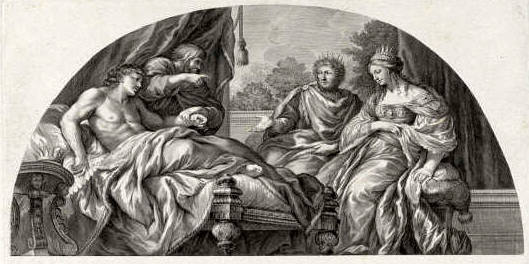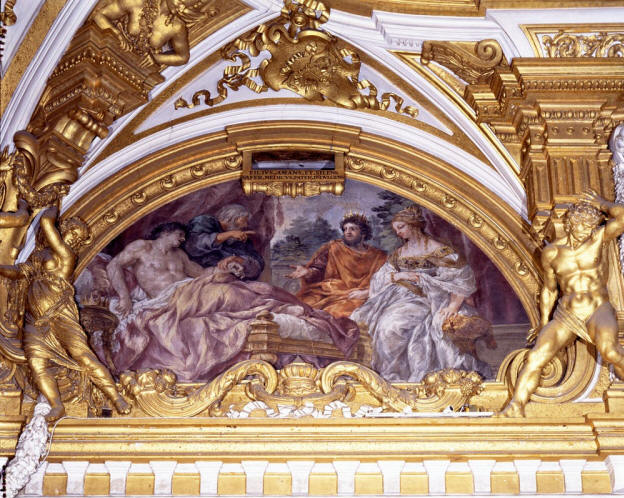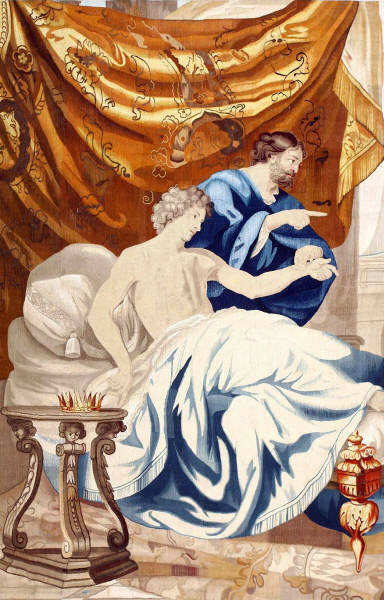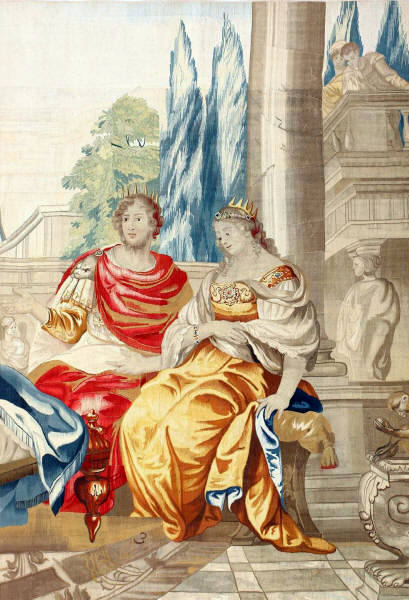 |
18th Century French Tapestry Depicting medical diagnosis of lovesickness |

|
The engraving above was made c. 1680, by Lambert Visscher. The engraving was based on a painting shown below the engraving by Pietro Berrettini known as Pietro da Cortona (Cortona 1597 -Rome 1669) which was done in 1641/2 and is on the ceiling of the Venus Room of Pitti Palace (Uffizi Gallery) in Florence Italy?
The tapestries below were made in the late 1600s or early 1700s and were clearly based on the engraving.
The engraving and tapestries show the doctor Erasistratus discovering the cause of Antiochus’ disease. The cause of his disease of lovesickness for his stepmother, Stratonice.
Antiochus was the son of Seleucus I, who gained power after the death of Alexander the Great. Seleucus had an illness that was difficult to diagnose, until Erasistratus figured out that it was his love for Stratonice. He diagnosed this by feeling an increase in pulse rate when Antiochus looked at Stratonice. To assist his son in getting over the “disease,” he allowed the two to be together. Antiochus made an complete recovery!!!
The tapestries are intricately done in silk, with vibrant colors, and in keeping with the details of the engraving and painting. Each tapestry measures 9 x 6 ft. |


